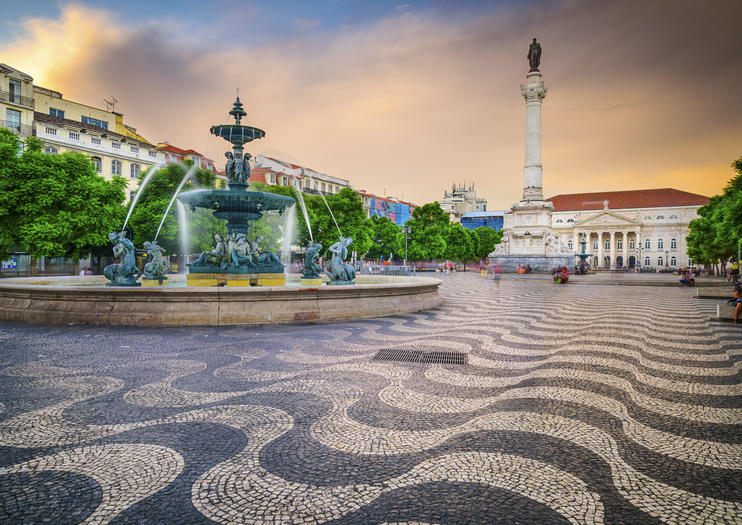It is assumed that the ancient Greeks had a trading post at the mouth of the Tagus River for some time, but the conflicts raging throughout the Mediterranean undoubtedly led to its abandonment, due mainly to the power of Carthage at that time. It seems certain however that the territory of Lisbon is primarily occupied by Mediterranean populations organised around a nuclear family. The civilizational influences of this Extremadura hill country region are Phoenician, Punic and, above all, in structural terms, Berber-Moorish and Latin-Roman, the latter being exogenous, more refined, and dominating as a culture of power, in administrative and educational structures, when the legacies of the Roman Empire were appropriated by the Catholic Church.
After the conquest of Carthage, the Romans started wars to pacify the West. Around 139/138 BC, they conquered Olissipo, during the campaign of Decimus Junius Gallicus, who reinforced the city walls to defend against hostile tribes. Lisbon was then annexed to the empire and rewarded with the granting of Roman citizenship, a privilege then very rare for non-Roman peoples. Felicitas Julia thus benefited from the status of a municipality, along with the territories around it within a radius of 50 km, paying no taxes to Rome, unlike almost all the other conquered castros and indigenous settlements. The city was finally integrated, with great autonomy, in the province of Lusitania, whose capital was Emeritas Augusta, the current Mérida, located in Spanish Extremadura. The Roman Olissipo was arranged in an amphitheatre from the hill of São Jorge Castle to the Terreiro do Trigo, the Campo das Cebolas, the old Ribeira Velha and Rua Augusta. One of the oldest and most important traces of Roman presence in Lisbon are the ruins of a magnificent theatre (1st century) then built on the site that today corresponds to nº 3A of Rua de São Mamede, in Alfama, much frequented by the elites of the time.
In Roman times, the city was famous for the manufacture of garum, a luxury food made of fish paste, preserved in amphorae and exported to Rome and the whole empire. Other products traded were wine and salt. Ptolemy called this primordial Lisbon the city of Ulysses.
Roman remains
A Roman hippodrome around 1800 years old is buried under Rossio, officially Praça D. Pedro IV. One of the walls of the hippodrome is a few metres from the block of the old Swiss pastry shop.
The metro works uncovered it, but the unfortunate decision was to cover it up again.
The structures of the Roman hippodrome are buried two metres below the surface. They were discovered years ago, during the construction work on the Rossio station of the Lisbon Metro. But they were buried again and are now forgotten. The shape of Rossio Square follows the lines of the hippodrome, where the Roman quadrupeds ran. The find lives only in the knowledge of archaeology specialists. At the time of the excavations, a Roman necropolis was also discovered.

In the Rossio square, there used to be lively horse racing for centuries. Lisbon's hippodrome seems to have been modelled on the Circus Maximus. The structure could have been visitable. At the time of the excavations, the Câmara and the Metropolitano did not take this step.
The same did not happen, for example, with the findings of the Eurostars Museum Hotel, formerly the Sommer Warehouses. There, one can see a continuous sequence of Lisbon's life from the Iron Age to the Contemporary Age. The Eurostars Hotel has shown that it is possible to modernise without forgetting the past.







Comments